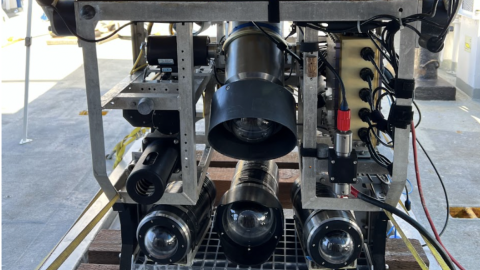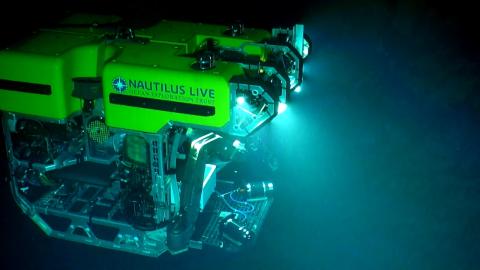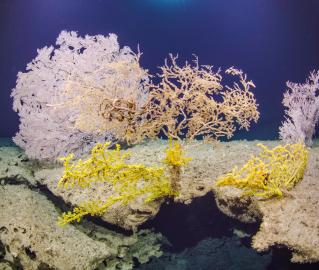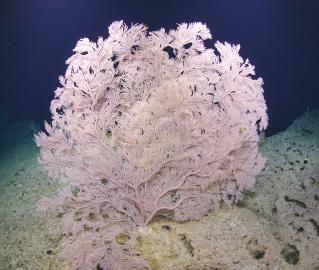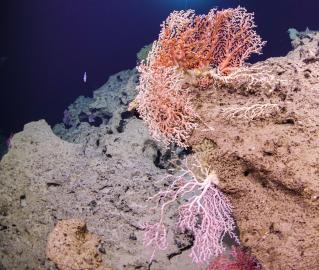Sailing with ONR Scientist Dr. Kristen Mitchell
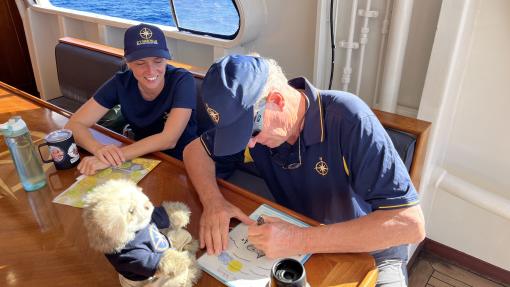
Dr. Kristen Mitchell works for the Office of Naval Research (ONR) as a STEM Outreach and In House Laboratory Research Support. She joined the E/V Nautilus Corps of Exploration in 2023 as a scientist on the Ocean Exploration through Advanced Imaging (NA156) expedition.
In her scientific career, she uses chemistry as a tool to understand Earth systems and how life adapts to and causes change within those systems. Now, she mostly works as a science communicator working across, government and industry.
We sat down with Dr. Mitchell to learn more about her work both on and off ship, and what inspires her to continue exploring the world’s ocean.
Tell us a bit about the evolution of your career.
My career has included studying hyperthermophilic archaea, hypersaline microbial mats, and investigating the origins of life on Earth, but never before have I seen a hydrothermal vent.
I now support internship programs at the Office of Naval Research for high school, undergraduate, and graduate students, which reaches over 1,000 students each year.
My trip aboard the Nautilus has been a full circle moment, and I am sure that this expedition will be a catalyst for the students who have been reached by the ship-to-shore interactions as their first step on their journey to become explorers and scientists.
What inspired your work as a geochemist?
When I first learned about hydrothermal vents, it was 1993, and I was in fourth grade. I could never have dreamt that 30 years later, I would be on a ship with the man who introduced me to those environments and headed to look at hydrothermal vents, Dr. Robert Ballard. The JASON Project, funded by the Office of Naval Research where I currently work, provided live field broadcasts to students through the 1990s and early 2000s and was the start of my inspiration.
What are you most excited about while sailing on Nautilus?
This expedition dove on hydrothermal vents at Kama‘ehuakanaloa Seamount, an underwater volcano located 20 kilometers off the coast of the Big Island of Hawai‘i. Scientists estimate Kamaʻehuakanaloa is about 400,000 years old making it the youngest of the someday Hawaiian Island chain!
How are hydrothermal vents like Kama’ehuakanaloa formed?
Mid-plate volcanoes, where oceanic island basalt is the hydrothermal source, are further away from the spreading sites like the Ring of Fire, resulting in cooler vent water temperatures. Cooler temperatures venting from Kama‘ehuakanaloa are thought to be derived from a mixture of unaltered seawater, seawater derived from hydrothermal fluids and magmatic volatile compounds, creating cooler water that ranges from 10°C up to about 200°C. These fluids have different chemical compositions compared to other vents other locations around the world.
The waters near these vents have high concentrations of carbon dioxide (CO2) and iron (Fe) but are low in sulfide, which is much higher in black smoker vents. This makes an ideal environment for iron-oxidizing bacteria.
These areas are surrounded by microbial mats. Larger marine life around the Kama‘ehuakanaloa vents are less diverse than in other vent environments.
What other types of deep-sea organisms call these locations home?
Fish in this area include Celebes sp monkfish and Cutthroat eel family members. The species composition changes over time at these sites. Macroorganisms including the bresilid shrimp and a tube worm, have not been seen here since aea cluster of earthquakes that occurred in 1996.
Can we expect this area to change?
The earthquake activity in the area continues to change the vent communities, changing the intensity of the venting as well as destroying some of the vents and the biological communities surrounding them.
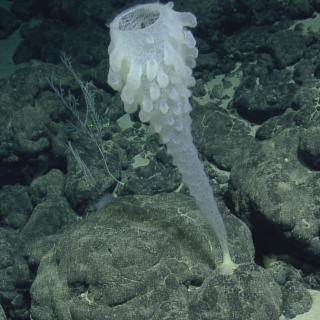
Ocean Exploration through Advanced Imaging
In October, we return to ROV dives continuing our work to advance technology use in the deep sea. Experimenting with deploying a new camera technology, we will explore using a new wide-field camera array on ROV Hercules to capture three-dimensional stereoscopic imagery from the seabed.
